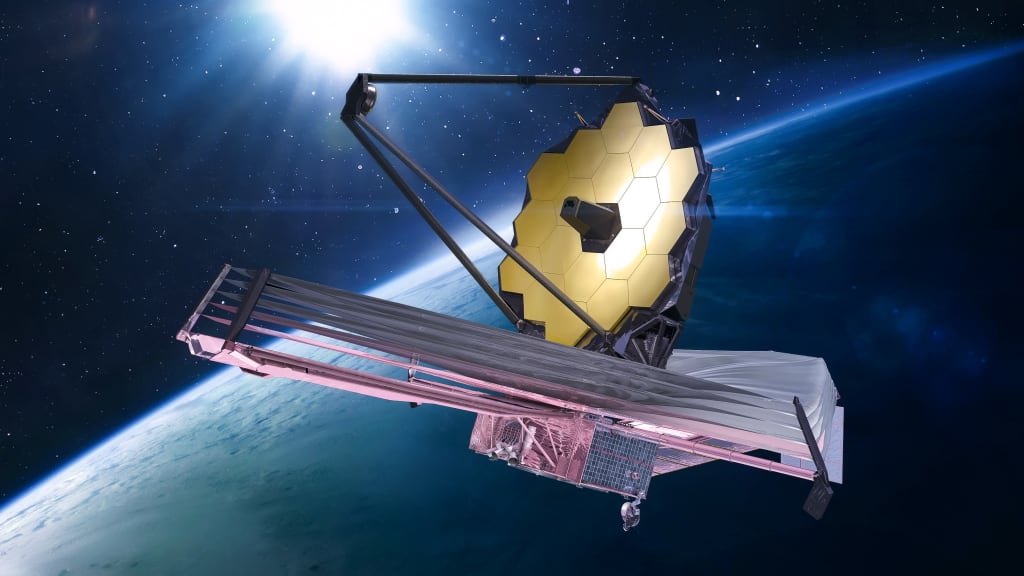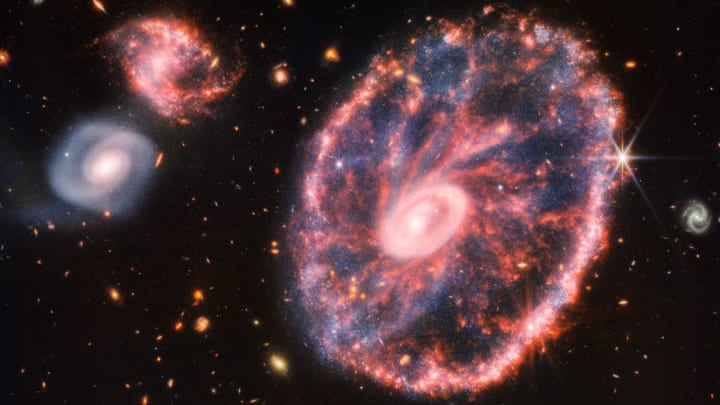Unlocking the Mysteries of the Universe with the James Webb Space Telescope
The Revolutionary Telescope's Cold Mission to Reveal the Secrets of the Cosmos

James Webb Space Telescope, or JWST, is a groundbreaking space observatory that is set to revolutionize our understanding of the universe. The telescope is named after James E. Webb, who served as the second administrator of NASA from 1961 to 1968, a critical period in the early days of space exploration.
The James Webb Space Telescope is a joint project of NASA, the European Space Agency (ESA), and the Canadian Space Agency (CSA). The telescope is designed to be the successor to the Hubble Space Telescope, which has been in operation since 1990 and has provided astronomers with unprecedented views of the cosmos.

The James Webb Space Telescope is designed to be much more powerful than the Hubble, with a mirror that is more than six times larger. It is also designed to be able to see much farther into the universe, thanks to its infrared capabilities. This will allow scientists to study the first galaxies that formed after the Big Bang, and to search for signs of life on planets outside our solar system.
The James Webb Space Telescope was introduced because of the limitations of the Hubble Space Telescope. Although the Hubble has been incredibly successful, it is limited by its size and the fact that it can only observe in visible and ultraviolet light. This means that it can only observe a limited range of objects in the universe, and cannot see through the dust and gas that obscures many of the most interesting objects.
The James Webb Space Telescope is designed to overcome these limitations by observing in the infrared part of the spectrum. This means that it can see through dust and gas, allowing scientists to study the birth of stars and planets, and to look for signs of life on other planets. It is also designed to be much more sensitive than the Hubble, meaning that it can detect much fainter objects and study them in greater detail.

The James Webb Space Telescope has been in development for more than 20 years, and has faced numerous technical and budgetary challenges along the way. Despite these challenges, the telescope is set to launch in late 2021, and scientists around the world are eagerly anticipating the new discoveries that it will make possible.
One of the unique features of the James Webb Space Telescope (JWST) is its ability to observe in the infrared part of the electromagnetic spectrum, which allows it to detect objects that are too cool or too far away to be seen with visible light. To achieve this, the telescope needs to be kept very cold, which is why it has a special sunshield to protect it from the heat of the sun.

The sunshield is made up of five layers of a special material called Kapton, which is designed to reflect heat and light away from the telescope. This keeps the telescope's instruments at a temperature of around -267 degrees Celsius (-449 degrees Fahrenheit), which is much colder than the surface of Pluto.
Why does the James Webb Space Telescope need to be kept so cold? Infrared observations are particularly sensitive to heat, which can cause interference and reduce the quality of the data collected. By keeping the telescope's instruments at such a low temperature, scientists can reduce the amount of heat radiation coming from the telescope itself, which allows them to detect even fainter signals from distant objects.
In addition to the sunshield, the James Webb Space Telescope has a specially designed cooling system that uses a combination of radiators and a cryocooler to keep the telescope's mid-infrared instrument (MIRI) at an even lower temperature of around -267 degrees Celsius. MIRI is one of the most important instruments on the telescope, as it is designed to study the early universe, the formation of stars and galaxies, and the atmospheres of exoplanets.
The James Webb Space Telescope (JWST) is one of the most complex and ambitious space projects ever undertaken, and as such, there are many interesting facts and details surrounding the telescope. Here are a few more interesting facts about the JWST:
1. The James Webb Space Telescope is the largest space telescope ever built, with a mirror that is 21 feet (6.5 meters) in diameter, over six times larger than the Hubble Space Telescope's mirror.
2. The telescope's sunshield is about the size of a tennis court and is made up of five layers of a special material called Kapton, which is designed to protect the sensitive instruments on the telescope from the heat of the sun.
3. The James Webb Space Telescope is an international collaboration between NASA, the European Space Agency (ESA), and the Canadian Space Agency (CSA). Each agency has contributed different parts of the telescope, with NASA leading the project.
4. The telescope is designed to observe in the infrared part of the spectrum, which is beyond what the human eye can see. This will allow it to see through dust and gas that obscures many of the most interesting objects in the universe.
5. The James Webb Space Telescope will be positioned in a special location in space known as the second Lagrange point (L2), which is located about 1.5 million kilometers (930,000 miles) from Earth. This position is ideal for the telescope's mission, as it provides a stable environment and allows it to observe a large portion of the sky.
6. The James Webb Space Telescope is named after James E. Webb, who served as the second administrator of NASA from 1961 to 1968. Webb was instrumental in the early days of space exploration, overseeing the Apollo missions that put humans on the moon.
7. The telescope has a planned mission lifespan of at least 10 years, but it could potentially last much longer. It is designed to be serviced by robots and potentially even humans, which could extend its lifespan and allow for even more groundbreaking discoveries.
8. The James Webb Space Telescope has been in development for over two decades and has faced numerous technical and budgetary challenges along the way. The project has cost over $10 billion to date, making it one of the most expensive space projects ever undertaken.
In conclusion, the James Webb Space Telescope is a remarkable achievement of human ingenuity and innovation, and represents a major step forward in our understanding of the universe. Named after a pioneering administrator of NASA, the telescope is designed to overcome the limitations of its predecessor, the Hubble Space Telescope, and to provide us with unprecedented views of the cosmos. With its advanced capabilities and cutting-edge technology, the James Webb Space Telescope promises to unlock new mysteries of the universe and expand our horizons beyond what we ever thought possible.
About the Creator
Subin @vocal
Not a Regular Blogger. But loves to share my thoughts, movie and drama recommentations.
Enjoyed the story? Support the Creator.
Subscribe for free to receive all their stories in your feed. You could also pledge your support or give them a one-off tip, letting them know you appreciate their work.






Comments
There are no comments for this story
Be the first to respond and start the conversation.